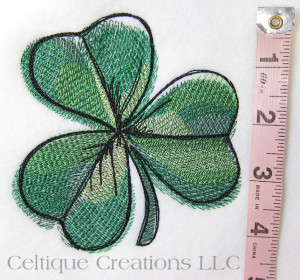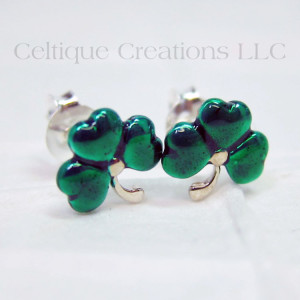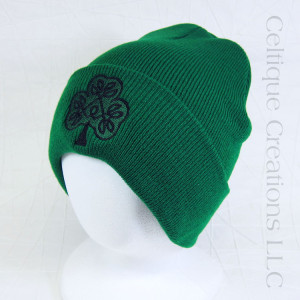-
DateMarch 1, 2018
-
Categories

The shamrock is almost synonymous with being Irish or Ireland. You can’t think of one without the other. But what is the meaning behind this little three leafed plant? The meaning is simple. It is a symbol of the Holy Trinity.
This little plant, which is found plentifully throughout Ireland, was used by St. Patrick to illustrate the Holy Trinity to the pagans he encountered. Because literacy was rare back then for a majority of the population, St. Patrick would pick a shamrock from the ground wherever he was to show people that the Father, the Sun and the Holy Spirit were three separate entities that made up the Supreme Being. Just like the three leaves creating the plant.
Side note: A shamrock is always and only a 3 leaf clover. A 4 leaf clover is a different symbol entirely.
 Where did the word “shamrock” come from? It’s an anglicized version of seamair óg or “young clover” in Irish Gaelic. In Irish texts there was no real distinction between regular clovers and shamrocks. It was first done by an Elizabethan era scholar named Edmund Campion. He wrote that the “wild Irish” would eat shamrocks. This story was repeated a lot in later texts. It is a misunderstanding that was put to rest by archeologists who found no evidence that people ever ate shamrocks, but they did eat sorrel wood which is seamsóg in Gaelic.
Where did the word “shamrock” come from? It’s an anglicized version of seamair óg or “young clover” in Irish Gaelic. In Irish texts there was no real distinction between regular clovers and shamrocks. It was first done by an Elizabethan era scholar named Edmund Campion. He wrote that the “wild Irish” would eat shamrocks. This story was repeated a lot in later texts. It is a misunderstanding that was put to rest by archeologists who found no evidence that people ever ate shamrocks, but they did eat sorrel wood which is seamsóg in Gaelic.
 How did the shamrock move from a religious symbol to one of a nation? It is used much like the rose for England, thistle for Scotland, and daffodil for Wales. It was the late 18th century when the first appearance of the shamrock outside of a religious context was seen. It was used by various local militias around Ireland as their emblems when protecting their communities from Spanish and French invaders while British soldiers were off fighting the American Revolutionary war. The shamrock was incorporated into the Royal Coat of Arms of the United Kingdom by the 1800 Acts of Union to represent Ireland. From there the use of the shamrock as a way to symbolize Ireland took off. In the 19th century it became a regular on book bindings, greeting cards and started to appear in songs, such as “The Shamrock Shore.” This trend continued through the 20th century and today we see shamrocks everywhere the Irish are. Just look around you on St. Patrick’s Day. Green and shamrocks as far as the eye can see.
How did the shamrock move from a religious symbol to one of a nation? It is used much like the rose for England, thistle for Scotland, and daffodil for Wales. It was the late 18th century when the first appearance of the shamrock outside of a religious context was seen. It was used by various local militias around Ireland as their emblems when protecting their communities from Spanish and French invaders while British soldiers were off fighting the American Revolutionary war. The shamrock was incorporated into the Royal Coat of Arms of the United Kingdom by the 1800 Acts of Union to represent Ireland. From there the use of the shamrock as a way to symbolize Ireland took off. In the 19th century it became a regular on book bindings, greeting cards and started to appear in songs, such as “The Shamrock Shore.” This trend continued through the 20th century and today we see shamrocks everywhere the Irish are. Just look around you on St. Patrick’s Day. Green and shamrocks as far as the eye can see.
If you would like to see what we have to offer with this three leafed little cutie on it, click the link below: